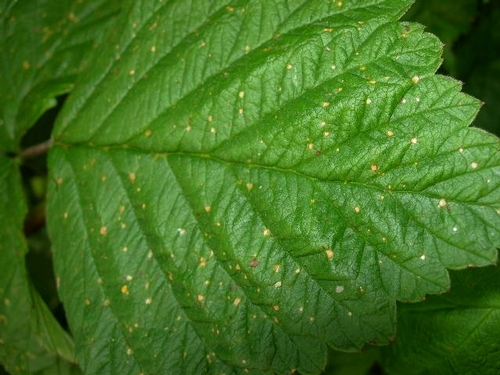
Carfentrazone-ethyl (Shark®) use in Avocados
Shark (carfentrazone) has been currently labeled for use in California avocados. It's widely used in many tree and vine crops. It's a Protoporphyrinogen oxidase (PPO) inhibitor. PPO is an enzyme in the chloroplast cell that oxidizes protoporphyrinogen IX (PPGIX) to produce protoporphyrin IX (PPIX). PPIX is important because it is a precursor molecule for both chlorophyll (needed for photosynthesis) and heme (needed for electron transfer chains). Inhibitors of the oxidase enzyme, however, do more than merely block the production of chlorophyll and heme. The inhibition of PPO by inhibitors also results in forming highly reactive molecules that attack and destroy lipids and protein membranes. When a lipid membrane is destroyed, cell becomes leaky and cell organelles dry and disintegrate rapidly.
PPO Inhibitors have limited translocation in plants and sometimes are referred to as contact herbicides. PPO Inhibitors injure mostly broadleaf plants; however, certain PPO Inhibitors have some activity on grasses. PPO Inhibitors usually burn plant tissues within hours or days of exposure. PPO Inhibitors used in the United States belong to eight different chemistries. It is used in the same niche that Treevix, Venue, and the post rates of Goal are used although registrations vary among those of course (only Goal from that list is registered on avocado).
Carfentrazone is a broadleaf-only herbicide and is interesting in that it has a fairly narrow weed spectrum; it has some species that it is really good on, but misses some other broadleaves almost completely. For example, it is excellent on bedstraw, but pretty weak on fleabane and marestail. It can provide good an inexpensive top-burn of perennial weeds like field bindweed, but will not kill it. Take a look at the label and, if the grower's weed spectrum aligns with some of the labeled weeds, it's worth checking out. Just be aware that it is grass-only and doesn't get all broadleaves equally.
Injury symptoms can occur within 1 to 2 hours after exposure, appearing first as water-soaked foliage, which is followed by browning (necrosis) of the tissue. Symptoms will appear most quickly with bright, sunny conditions at application. Drift injury will appear as speckling on leaf tissue. The necrotic spots are sometimes surrounded by a reddish colored ring. Injury from soil applications or residues appears as a mottled chlorosis and necrosis.
Fig. 1. Phytotoxicity of Shark herbicide on non-target leaf (above)
Phytotoxicity of Shark herbicide on non-target leaf. Since the droplets landing on the
Mixing the formulation depends on the growers sprayer calibration. If applying 20 gal of water per acre, that would be 5 acres per 100 gal mix and would need 10 fl oz product.
For a “spot treatment”, there is a table on the Shark EW label with mix amounts “based on 1 gal of water evenly covering 1000 square feet”. Take a look at Table 4 on this label: https://s3-us-west-1.amazonaws.com/www.agrian.com/pdfs/Shark_EW_Label1q.pdf

